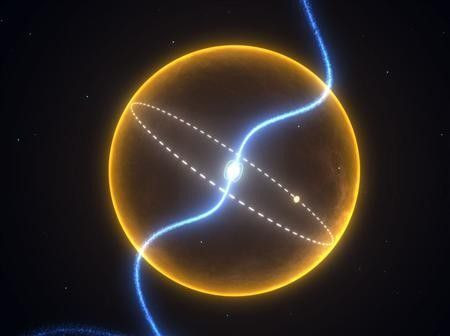Planet Made of Diamonds Discovered

The universe contains many wonders, but scientists have discovered something that defies the imagination: a planet made of diamonds.
The carbon-based planet is denser than any previously discovered. A diamond forms when carbon is put under immense pressure, so scientists speculate that the conditions are right for much of the planet to be crystalline -- in other words, a giant celestial diamond.
The evolutionary history and amazing density of the planet all suggest it is comprised of carbon -- i.e. a massive diamond orbiting a neutron star, Matthew Bailes of Swinburne University of Technology in Melbourne told Reuters.
Located about 4,000 light years away in the constellation Serpens, the planet is in a tight orbit around a type of tiny dead neutron star known as a pulsar, completing its revolution around the pulsar every two hours and 10 minutes. Pulsars regularly emit bursts of radiation , which allowed scientists to detect this one, called PSR J1719-1438. They realized that the radiation beams were being modulated by a small planet, which then led them to the diamond planet.
The scientists' measurements indicate that the planet has slightly more mass than Jupiter, but is 20 times as dense. It is also lacking in lighter elements like helium and hydrogen. This confluence of extraordinary factors led them to believe they had stumbled across something unprecedented. Researchers involved were not certain what the planet would look like up close.
In terms of what it would look like, I don't know, I could even speculate, said Ben Stappers of the University of Manchester. I don't imagine that a picture of a very shiny object is what we're looking at here.
It's highly speculative, but if you shine a light on it, I can't see any reason why it wouldn't sparkle like a diamond, Travis Metcalfe of the National Center for Atmospheric Research said to New Scientist.
An international research team comprised of scientists from Australia, Germany, Italy, the United Kingdom and the United States made the discovery by using a 64-meter radio telescope in Parkes, Australia.
© Copyright IBTimes 2025. All rights reserved.





















